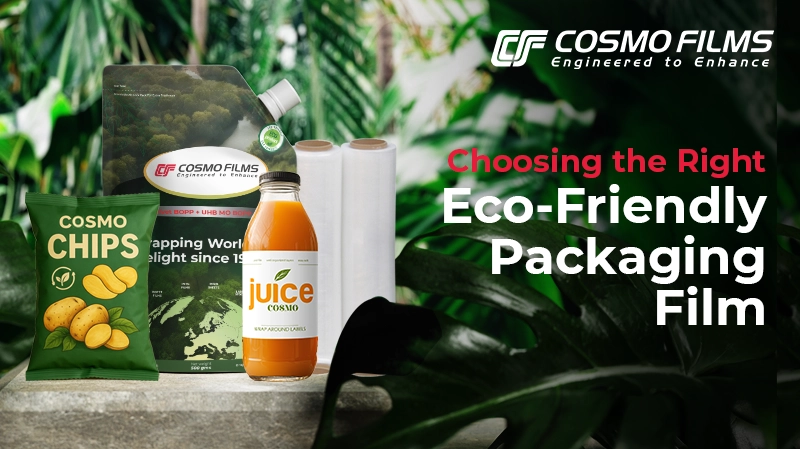Love to hear from you!
Get in touch.

Consumers, brands, and governments are all prioritizing eco-friendly solutions, especially when it comes to packaging. Two terms often dominate the conversation - recyclable films and compostable packaging films. But which one is the better choice?
At Cosmo Films, we believe the answer isn't always black and white. Both options come with distinct advantages and challenges. Let's understand how recyclable and compostable packaging films compare in terms of environmental impact, and performance.
Recyclable films can be processed and reused at the end of their life cycle and are made from materials like polypropylene (PP), polyethylene (PE), or polyethylene terephthalate (PET), all of which can be collected, sorted, and remanufactured into new products.
At Cosmo Films, we manufacture a range of recyclable films, including mono-material structures, simplifying the recycling process. Our range of eco-friendly packaging mono-material films include:
Compostable Packaging Films
Compostable films are made from plant-based materials like polylactic acid (PLA), starch, or cellulose. These films break down into water, carbon dioxide, and biomass under specific composting conditions.
A. Environmental Impact
Recyclable Films
Compostable Films
B. Performance and Packaging Design
Recyclable Films
Compostable Films
What's the Better Choice?
The better choice depends on various factors - end-use, regional waste management systems, product shelf life, and brand sustainability goals.
Choose recyclable films if:
Choose compostable films if:
At Cosmo Films, we are deeply committed to innovation that aligns with sustainability. With our recyclable mono material structures, we continue to push the boundaries of packaging science.
Our R&D teams actively work on solutions that reduce environmental impact while maintaining functionality, printability, and cost-efficiency. If you are looking to transition to recyclable films, we're here to support your sustainable journey.
Let's shape the future of packaging—responsibly.
Explore our sustainable film solutions at www.cosmofilms.com.
Featured Post
Love to hear from you!
Get in touch.